Best Time to Visit Annapurna Base Camp: Seasons, Tips, and More
The Annapurna Base Camp trek is one of the most popular treks in Nepal, attracting adventurous travelers from all over the world. This trek takes you through diverse landscapes, including terraced fields, alpine meadows, and stunning views of the towering Himalayas. Along the way, trekkers pass through the traditional villages of the Gurung and Magar people, offering a glimpse into their unique culture and way of life.
This trek truly offers something for everyone. Whether you're an experienced trekker or just starting, you'll find a mix of relaxing mountain scenery and challenging high-altitude climbs.
It is crucial to know the basics regarding the Annapurna Base Camp trek, such as the best time to travel, how long to trek, and the temperature of Annapurna Base Camp.
Knowing the Annapurna Region temperature will add to the trekking experience, whether you look for spring gardens or clear skies during autumn. Moreover, appreciating aspects such as the cost of trekking to Annapurna Base Camp and the day-to-day schedule will help you prepare for this fantastic experience.
The Annapurna Base Camp trek is ideal for those who wish to enjoy stunning sights and cultural experiences. However, to make the most of your journey, choosing the best time to visit Annapurna Base Camp is essential.
What Makes the Annapurna Base Camp Trek Unique?
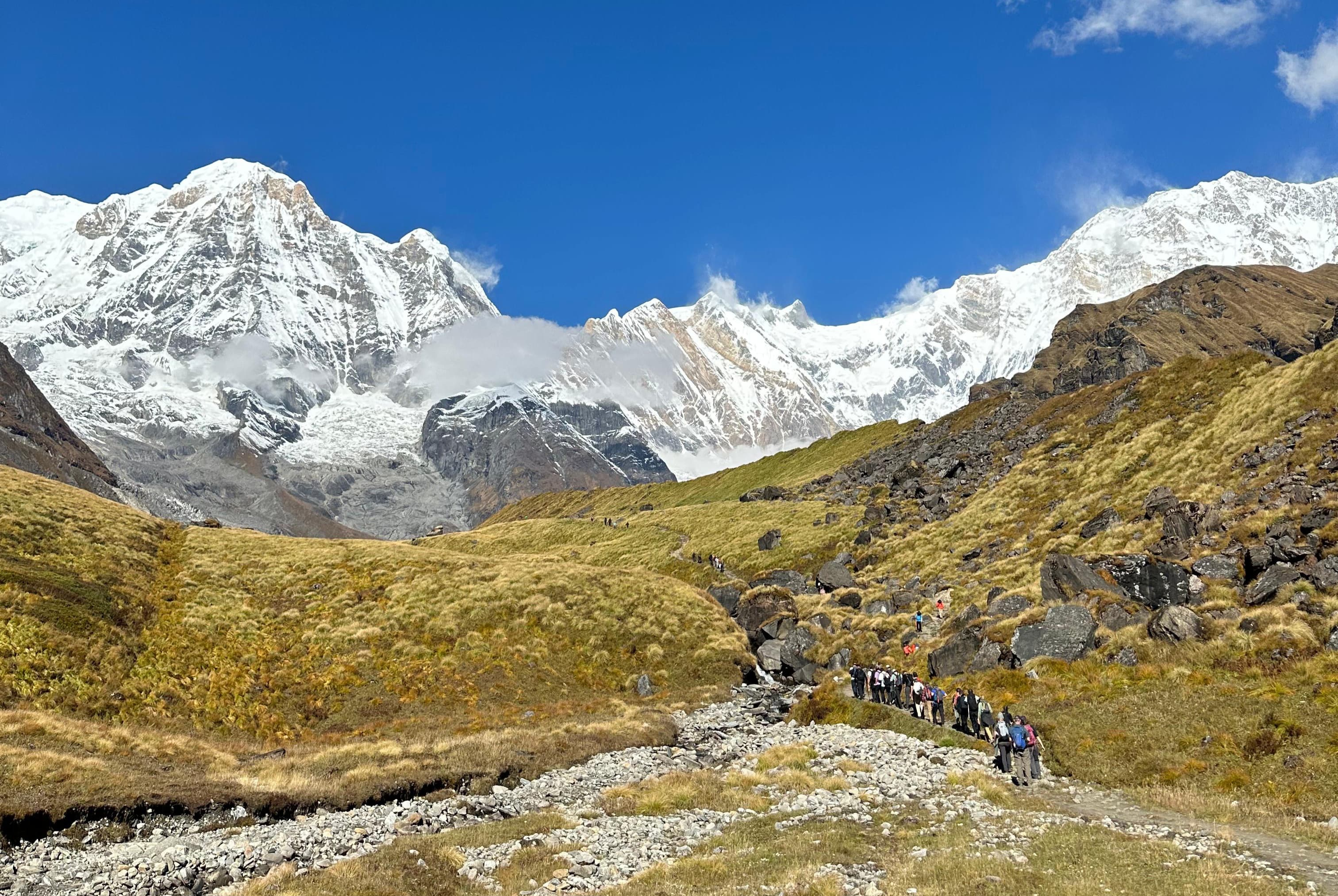
Diverse Landscapes: This particular climb presents an assortment of scenery, ranging from averagely low tropical rainy forests to elevations above sea level alpine grasslands, making the surroundings enjoyable at any given moment.
Stunning Mountain Views: By the way, the trek offers phenomenal views of mountains such as Annapurna I, Machapuchare—a sacred mountain—and many others, but this particular view at the Camp Base is the best of all.
Cultural Immersion: Visit the Gurungs and Magars, sleep in local tea houses, and experience the way of life of the mountainous people of Nepal.
Weather Variation: The trek offers different experiences depending on the season. For example, the Annapurna base camp temperature in October is above 46 degrees Celsius, which is favorable for trekking activities, while temperatures at this base camp in the spring season, in April, are characterized by beautiful flowering plants.
Accessibility: Unlike most trekkers in the Himalayas, it offers treks suitable for both inexperienced and highly experienced trekkers. The low-cost Annapurna Base Camp trek makes it one of the most popular trails in the Himalayas.
Natural Beauty Year Round: The beauty of the love of the trek varies with the Annapurna Base Camp weather every month, thus making every trip a different experience, be it trekking in the clear autumn skies or visiting the snow-capped mountains in winter.
Sense of Accomplishment: Reaching this particular base camp, ringed by some of the tallest mountain ranges in the world, is a very fulfilling accomplishment, even if one follows a rigid Annapurna Base Camp trek itinerary or engages in bolder adventures.
A Glimpse of the Stunning Annapurna Region
Iconic Peaks and Panoramic Views
Regarded as one of the finest treks in the Annapurna Region, the Annapurna Base Camp trek offers fantastic panoramic views of the entire Annapurna range, dominated by the presence of Mt. Annapurna I Machapuchare and other peaks. Every stage ascends has a newly developed view, making the trek more visually attractive.
Views of the mountains at sunrise and sunset give a splendid golden view of the mountains, which are suitable for photographing. The beautiful scenery offers a visual treat to the onlookers, but it also touches the inner self, making the journey remarkable.
Lush Flora and Fauna
Annapurna is one of the wealthiest regions in terms of flora and fauna. Walking from one point to another within the Annapurna Conservation Area, a valley with beautiful rhododendron trees, bamboo plants, and terraces comes into view.
Dropping rain brings different colors to the landscape, with protruding summer being the flowering season. This rich biosphere encourages trekkers to take in the marvelous surroundings and look out for other creatures during their trekking.
Cultural Treasures
Consequently, the expedition explores the local ways of life. Ghandruk and Chomrong, for instance, are steeped in tradition and are popularly known for their local hospitality to trekkers.
Interacting closely with the locals is enriching, enabling participation in local food and their way of life. These cultural encounters improve the trekking experience by offering a different level of adventure and interrelation.
Spiritual Significance
For the locals, Annapurna is more than just a system of mountains. Because of this, the trek is complementary and more respectful of nature, which is present everywhere around. As one gets nearer the base camp, the mountains are filled with prayer flags and even small structures known as stupas, which the villagers have put in place to show how much they regard the hills.
This enables an ambiance filled with tranquillity and encourages the trekkers to contemplate the beautiful scenery.
The Journey to Base Camp
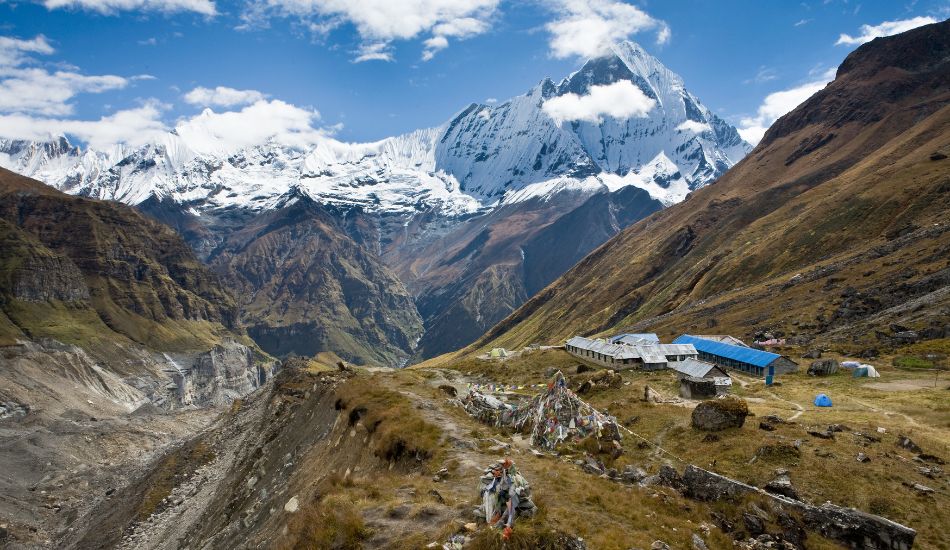
Annapurna Base Camp (4130 m) is a journey of various landscapes and experiences. Each trekking day comes with new challenges, led by crossing suspension bridges and then moving to greenish bamboo forests and rocky terrains. Another aspect contributing to the thrill is the differing Annapurna Base Camp weather by month, enabling the trekkers to appreciate the region's beauty in different seasons.
Every footstep on this exquisite trek gives a better view of the massive mountains of the Himalayas and the final pleasure of reaching the base camp.
Recommended Read: Tips for trekking to Annapurna Base Camp
Best Time to Visit Annapurna Base Camp
Knowing the right winter season to trek to Annapurna Base Camp is vital if one wishes to have a good trek. The region has different seasons, each offering a different trekking experience.
Spring Treks: March to May
Mild Weather: Spring and daytime temperatures between 10°C and 15°C are appreciated, promoting ideal trekking conditions. Such an environment will also help you enjoy long walks in the woods and breathtaking views without the risk of overheating.
Blooming Flora: Vivid red rhododendrons and several other wildflowers along the way make the trails picturesque. This natural beauty does not diminish the trekking joy, and step-by-step trekking feels like I am strolling in a bed furnished with flowers.
Fewer Crowds: The spring season has fewer trekkers than the very busy autumn season and is a more refreshing experience on the slopes. Such serenity attracts hikers more to nature and helps them appreciate the beauty that surrounds them.
Cool Nights: When climbing, specifically at higher points, expect cool weather beyond all expectations during the night, when it is usually deep inside the cold. Icy conditions may be experienced during rest, so warm muffs should be included in the wearing gear.
For those who enjoy exploring diverse landscapes, the Annapurna Circuit Trek is another excellent option during spring. It offers unique cultural insights and breathtaking views of the Annapurna range.
Autumn Adventures: September to November
Stable Weather: Autumn is characterized by clear skies and temperatures between 15°C and 20°C. Given these conditions, it is not surprising that trekking activities are rampant during this season. Such pleasant weather conditions, usually associated with little or no rain chances, allow for extended periods spent on the trail.
Best Views: October offers the best landscapes because of the visible mountain ranges. October has clear skies that are perfect for enjoying the view of mountain ranges to the fullest. Picture-perfect views of the Annapurna mountain range with virtually no clouds are typical during this season.
Increased Foot Traffic: There are more trekkers during autumn, so the trails and scenic spots become very busy. Everyone is highly encouraged to plan and make room reservations. Booking early will mean that there are no worrying and stress-inducing crowds.
Comfortable Days: Day temperatures are also bearable, so going for long hikes is pleasant because one does not suffer from excess heat or cold. Such a scenario helps the trekkers fully engage in the course, enjoying the sights, sounds, and even scents the mountains offer.
Winter Wonders: December to February
Serene Experience: During winter, one gets to walk alone on the trails, as there are few fellow trekkers. This allows tuning in perfectly to the picturesque snowy scenery, thus making every second feel precious.
Snow-Covered Landscape: The region becomes a picturesque paradise in the harvest of snow with a snow-filled horizon and trails. The sights are beautiful beyond the world, creating a memorable landscape with many picture-taking moments.
Cold Temperatures: The day’s heat is usually close to fidgeting, with five degrees Celsius, while the night's frigid levels drop even a few degrees lower. Such a cold requires all the intended trekkers to seriously check and pack ready with very warm clothing and even sleeping bags.
Challenging Conditions: Icy walking paths and snow may lead to challenges in winter trekking, enhancing its appeal. It takes experience and caution to work on such ground. Still, all this effort is rewarded when you look outside, especially in wintertime, as nature takes a new form, especially in the Annapurna Region, for adventurers ready for the challenge.
Monsoon Season: June to August
Heavy Rainfall: During the monsoon season, there is frequent heavy rain, which makes the treks very difficult. Excessive rain results in muddy paths, which make traversing more challenging. However, to those who do not mind getting wet, it is a journey that offers adventure.
Lush Greenery: After a few months of respite, plants thrive again with the rains in the lush, rich landscape. Everything from the hills to the mounds is a vibrant green-blue hue, which enhances the scenic beauty vastly. There are instances when cloud cover could restrict visibility, but the greenery has its way of compensating for that.
Fewer Tourists: There are fewer trekkers during the monsoon period, allowing for more privacy and peacefulness on the trail. In this season, it is an ideal way out for those who do not enjoy crowded ways and active sports. You do not have to worry about the loads of trekkers and focus on your explorations.
Potential Hazards: It is no news that rainy seasons can muddy the path and cause landslides and other factors when monsoon trekking makes planning low-risk yet comes with potential hazards. However, such discomfort is easily outweighed by the well-kept, pristine, and lonely spaces that most seasoned and equipped trekkers come to expect.
Choosing Your Ideal Time
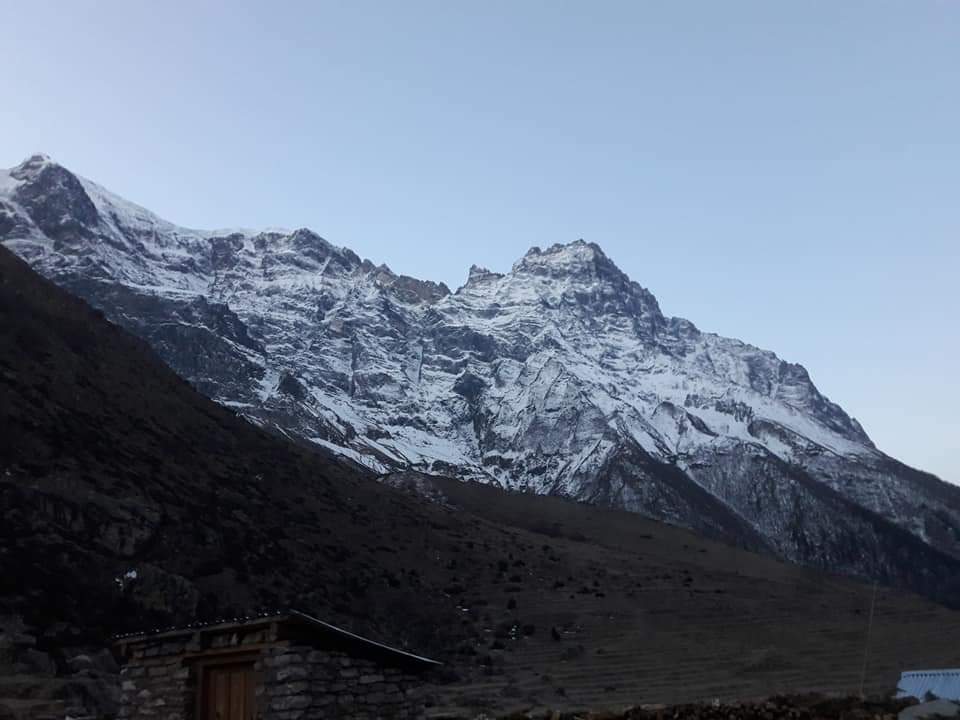
Personal Preferences
The best time for the Annapurna base camp trek depends on the trekking style and the experience you seek. If you are a fan of clear skies and no rain where you can be certain of the weather conditions, then fall may be that season. Otherwise, the spring season presents its floral with a lesser crowd. It narrows down to what specific details in each season intrigue you the most since all seasons have something different to offer.
Weather Conditions
Knowing how the weather behaves at the Annapurna Base Camp by month will also help you figure out when to visit the camp. Spring and autumn are the best because they have more settled weather conditions, while snow is also swimming wet, and the sand has a hot sun with no trekkers in sight. Annapurna base camp temperature in November comes with excessive rainfall, making it hard to trek the region. Weather will more or less affect your enjoyment at that destination, so be careful when selecting the period you are most at ease with.
Trek Difficulty
Terrain conditions and weather directly influence trek categories. Winter has dangerous icy paths, and the monsoon has slippery, muddy, difficult trails. If you are a novice or just want less strain on your trip, you can schedule your trip for spring or autumn because there are no risky trails and unmanageable conditions then.
Crowd Levels
Winter and monsoon seasons are great for those who want to enjoy peace as they hike since the trails are not crowded but relatively quiet; on the other hand, spring and autumn seasons appeal to trekkers. If you want to take a trip where you will meet a lot of fellow hikers, you should, therefore, schedule your trip for autumn, as it is the most active period; however, if you prefer something different and would want to enjoy nature, then you will find the lantern season of autumn more enjoyable.
Recommended Read: Accommodation on Annapurna Base Camp Trek
Preparing for Your Annapurna Base Camp Trek
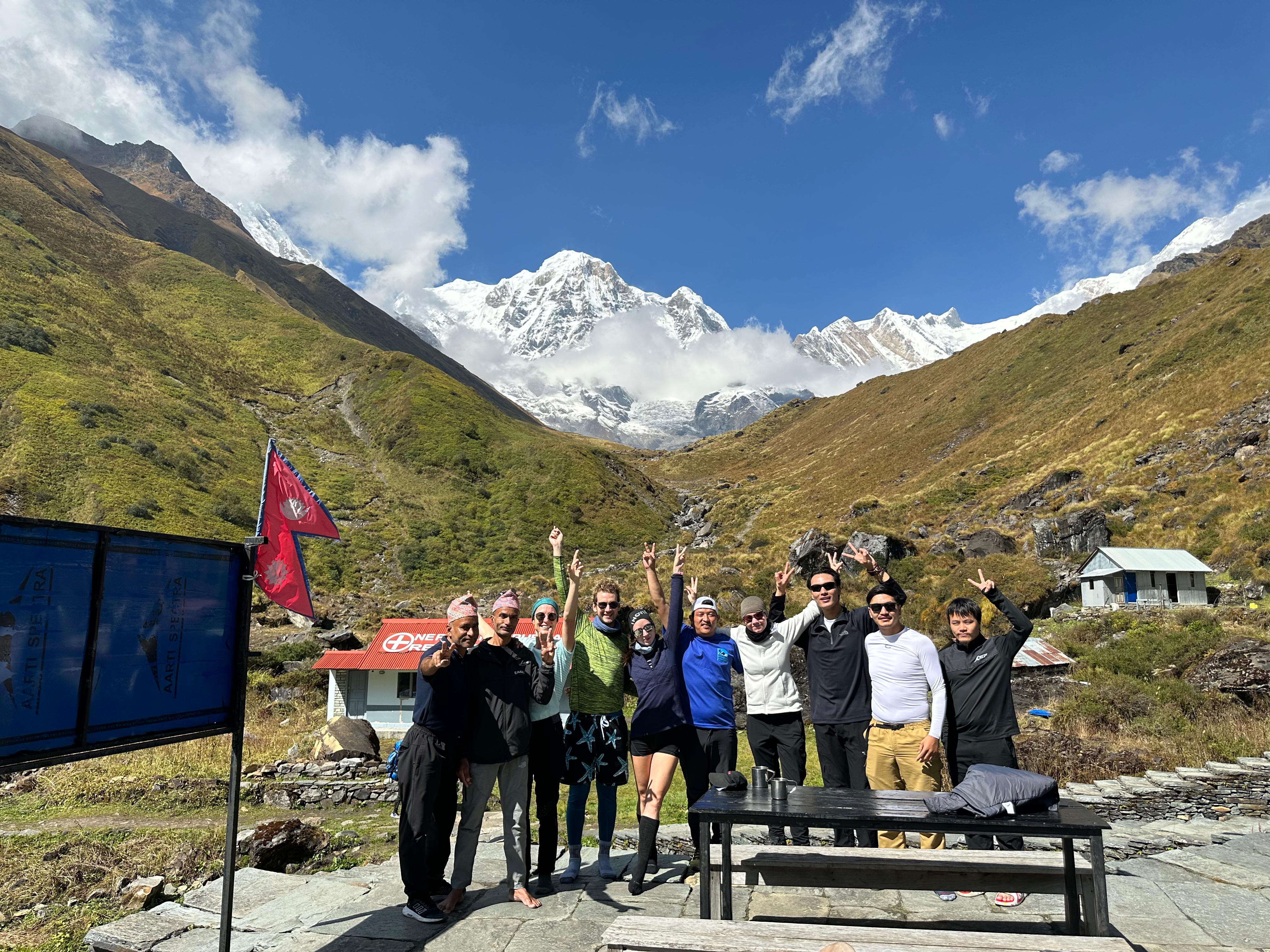
Essential Gear
The right gear is one of the most important factors in the success of any Annapurna Base Camp trek. In other words, different seasons require different equipment. For example, winter requires warm clothing, while the wet season requires rain gear. Some basic must-haves include a good pair of trek shoes, a good-quality duffel bag, and extra clothes to cope with the weather. Smart packing ensures you are carried and prepared for the trail's challenges.
Trek Itinerary
It is advisable to organize your Annapurna Base Camp trek itinerary. The trek is usually 7 to 12 days, depending on the speed of one’s ascent and how long one needs to acclimate. The route will also cover essential places such as Ghorepani and Machapuchare Base Camp so that the most scenic and culturally rich places are seen during the trek. More attention to detail in the plan helps you enjoy the trek without much hassle.
For trekkers comparing different routes in the Annapurna region, it's worth checking out this detailed comparison of the Annapurna Base Camp vs. Annapurna Circuit to help you decide which trek suits your adventure needs.
Trek Costs
Understanding the Annapurna Base Camp trek cost is essential for a budget figure, as money is an important tool for every planned activity. The price comprises several factors, including permits, guides, accommodation, and food. The range will depend on the season and the individual choice, but generally, it goes from 500 to 1000 dollars. It is always advisable to make financial preparations for every trip to help the travelers enjoy the whole trip without worrying about expenses.
Fitness and Training
The trek is moderate; therefore, if it requires one to prepare the body, that is a must. One should get cardiovascular, strength, and endurance training to be fit for the hike. There is a fit body, which means a fit altitude and a fit journey, making it easier and less tiresome to take the trip.
Final Tips for a Memorable Annapurna Base Camp Trek
Acclimatization
Acclimatization is the most important aspect to consider when climbing at higher altitudes. Therefore, it is advisable to include a few more days in the Annapurna Base Camp trek itinerary for rest and acclimatization. Do not rush yourself; drink plenty of fluids to facilitate your body’s acclimatization, making the trek more exciting and safe. Adequate terrain acclimatization is important in achieving a successful high-altitude dwelling trek.
Weather Awareness
Monitor the weather statistics of Annapurna Base Camp by month before embarking on your expedition. Weather, being what it is, especially during the rainy season and winter, is likely to affect your trek. That way, you can be ready for changes in the weather so you can prepare well and embark on a pleasant trekking activity. The golden rule is to feel the weight of spare equipment in hand.
Respect the Environment
The Annapurna region is gorgeous, yet it is also quite delicate. To achieve this, embrace the Leave No Trace principles, reduce environmental harm as much as possible, carry out all litter, and walk along only approved pathways. For this reason, we are supporting responsible tourism practices to keep this region beautiful for the next trekkers. This is especially important in the current climate, where we are all trying to be more conscious of the environment so that others can appreciate this trek in the future.
Cultural Etiquette
The trek to Annapurna Base Camp passes through culturally rich villages. Adhere to the local traditions, practice restraint toward the locals, and thank them, when applicable, for their kindness. Such respect, however, will be balanced since the region and its people will connect with you on a different level. A culture makes a trek much more significant than otherwise it would be.
Conclusion: Embark on the Annapurna Base Camp Journey
The Annapurna Base Camp trek is a delightful experience combining different aspects of nature, culture, and personal satisfaction. This journey is crazy in every way, be it during the vibrant colors of spring, the clear blues of autumn, or even the stillness of the snow in winter.
From understanding the combined challenges of the trek to admiring the peaking mountains, there are special rewards in every season; where sufficient equipment, a well-thought-out Annapurna Base Camp trek itinerary, and a love for adventure are available, moments that will be cherished forever are guaranteed.
For an unforgettable trekking experience, consider planning your journey with Dolpo Caravan Treks. Their expert guidance and tailored itineraries will ensure that your adventure in the Annapurna region is safe and memorable.
Explore Annapurna Region Packages
FAQs
When will be the best time to trek to Annapurna Base Camp?
The best times to trek to Annapurna Base Camp are fall (September to November) and spring (March to May). These months have good weather, blue skies, and moderate temperatures, which makes the trek exciting and allows one to see the mountains at their best.
How many days will be long enough for the Annapurna Base Camp?
The Annapurna Base Camp trek usually takes about 7 to 12 days, depending on the level of activities, the onset of altitude sickness, and the route taken, among other factors. The typical itinerary included in most packages includes tourists visiting Ghorepani and Machapuchare Base Camp.
Is Annapurna Base Camp worth it?
Definitely! The trek to Annapurna base camp represents one of the heavenly treks within the Himalayan range. The beautiful mountains, various scenarios and cultures, and other things make it such a do for anyone who loves walks. Spring with its flowering rhododendrons, summer with green peaks, and autumn with clear views—all the seasons are beautiful.
What is the difficulty level for the Annapurna Base Camp trek?
Although the Annapurna Base Camp trek is not overly tough, it falls within the moderate range, allowing most people with a fair degree of fitness to complete it. It does not necessitate technical climbing; however, the extended hours of hiking, high altitude, and steep climbs can be strenuous.
What must I wear when visiting Annapurna Base Camp?
When undertaking a journey to Annapurna Base Camp, it is imperative to manage the clothing due to the hot and cold temperatures experienced on the way. To avoid excessive heat loss, it is recommended to wear moisture-wicking base layers, a warm insulating layer (like fleece or down), and a waterproof outer layer to seal out rain or snow.

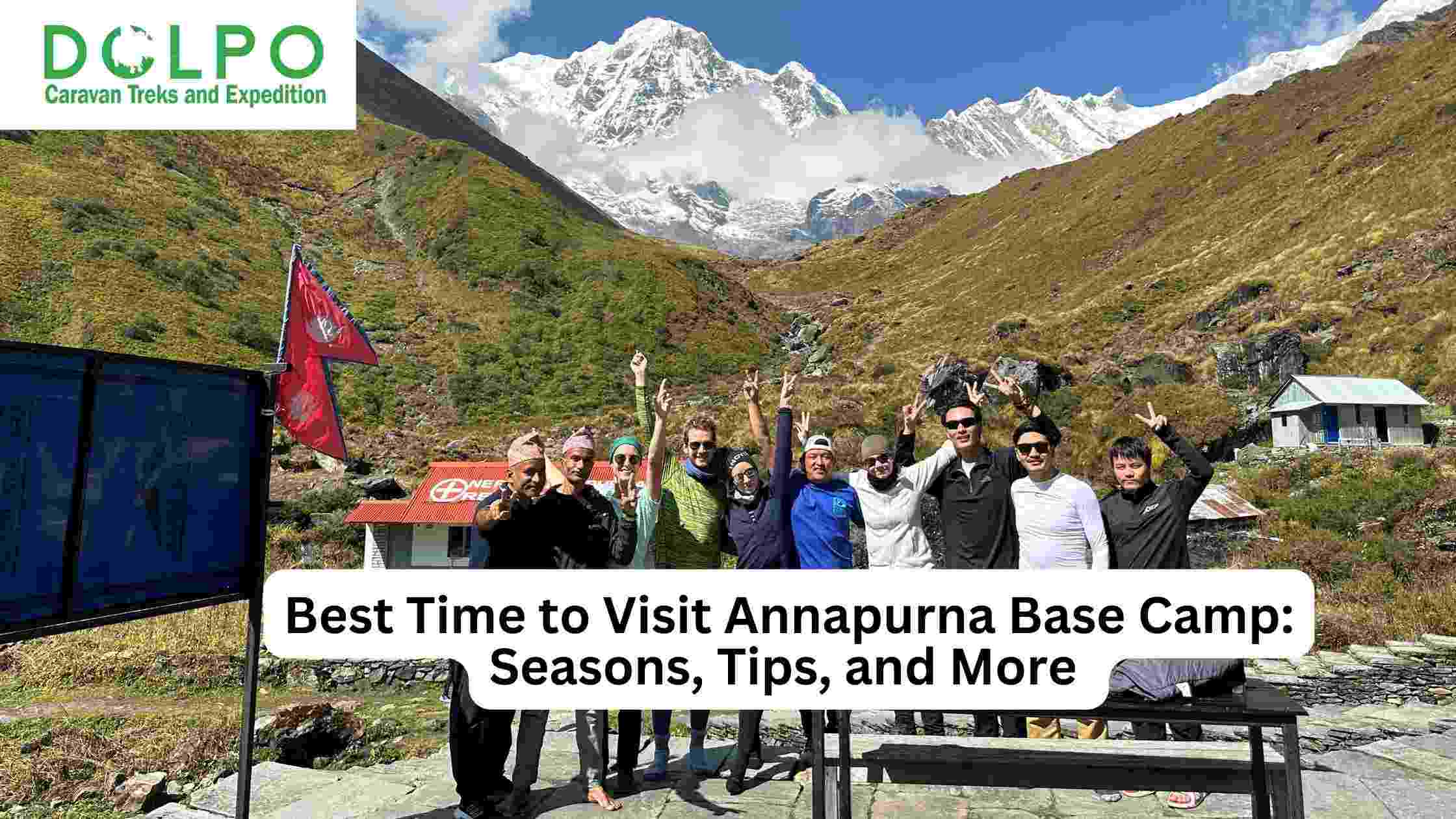
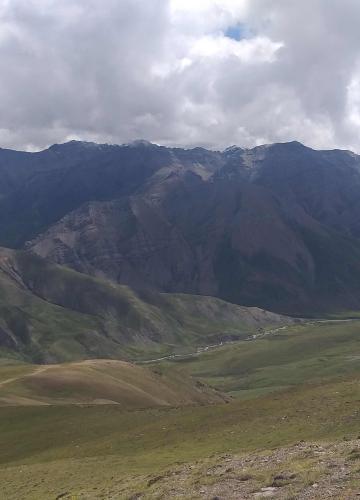
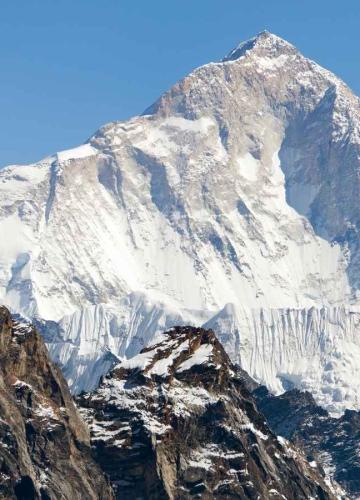
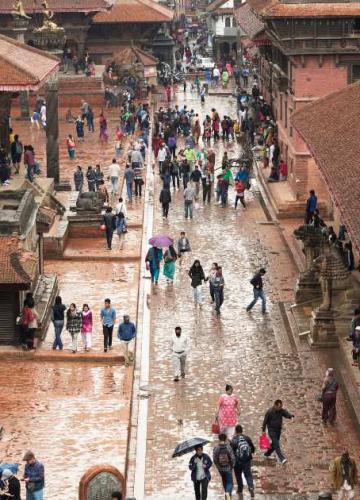
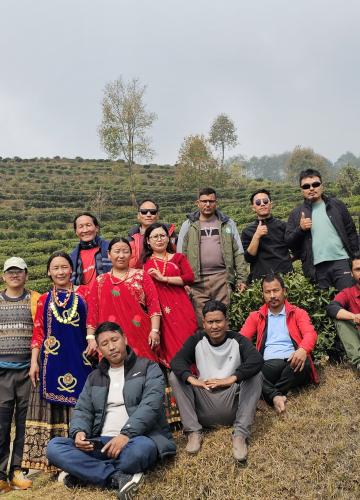
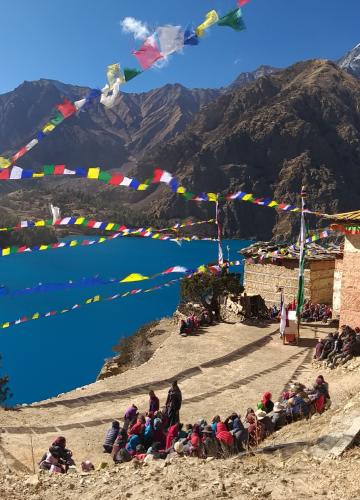
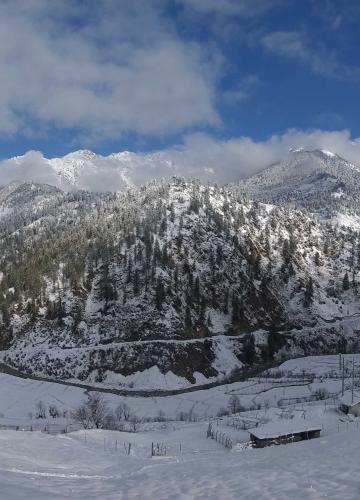

Leave Your Comment